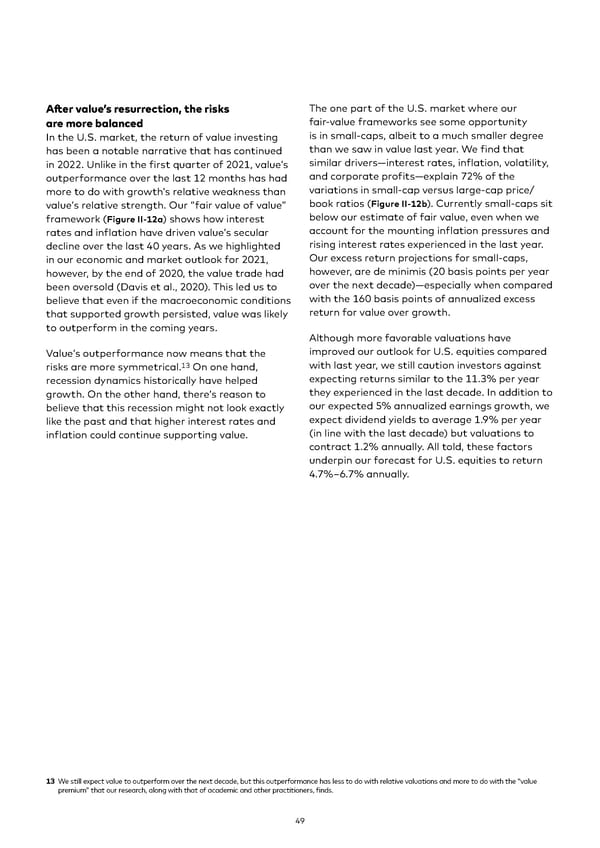After value’s resurrection, the risks The one part of the U.S. market where our are more balanced fair-value frameworks see some opportunity In the U.S. market, the return of value investing is in small-caps, albeit to a much smaller degree has been a notable narrative that has continued than we saw in value last year. We find that in 2022. Unlike in the first quarter of 2021, value’s similar drivers—interest rates, inflation, volatility, outperformance over the last 12 months has had and corporate profits—explain 72% of the more to do with growth’s relative weakness than variations in small-cap versus large-cap price/ value’s relative strength. Our “fair value of value” book ratios (Figure II-12b). Currently small-caps sit framework (Figure II-12a) shows how interest below our estimate of fair value, even when we rates and inflation have driven value’s secular account for the mounting inflation pressures and decline over the last 40 years. As we highlighted rising interest rates experienced in the last year. in our economic and market outlook for 2021, Our excess return projections for small-caps, however, by the end of 2020, the value trade had however, are de minimis (20 basis points per year been oversold (Davis et al., 2020). This led us to over the next decade)—especially when compared believe that even if the macroeconomic conditions with the 160 basis points of annualized excess that supported growth persisted, value was likely return for value over growth. to outperform in the coming years. Although more favorable valuations have Value’s outperformance now means that the improved our outlook for U.S. equities compared 13 with last year, we still caution investors against risks are more symmetrical. On one hand, recession dynamics historically have helped expecting returns similar to the 11.3% per year growth. On the other hand, there’s reason to they experienced in the last decade. In addition to believe that this recession might not look exactly our expected 5% annualized earnings growth, we like the past and that higher interest rates and expect dividend yields to average 1.9% per year inflation could continue supporting value. (in line with the last decade) but valuations to contract 1.2% annually. All told, these factors underpin our forecast for U.S. equities to return 4.7%–6.7% annually. 13 We still expect value to outperform over the next decade, but this outperformance has less to do with relative valuations and more to do with the “value premium” that our research, along with that of academic and other practitioners, finds. 49
 Vanguard economic and market outlook for 2023 Page 48 Page 50
Vanguard economic and market outlook for 2023 Page 48 Page 50